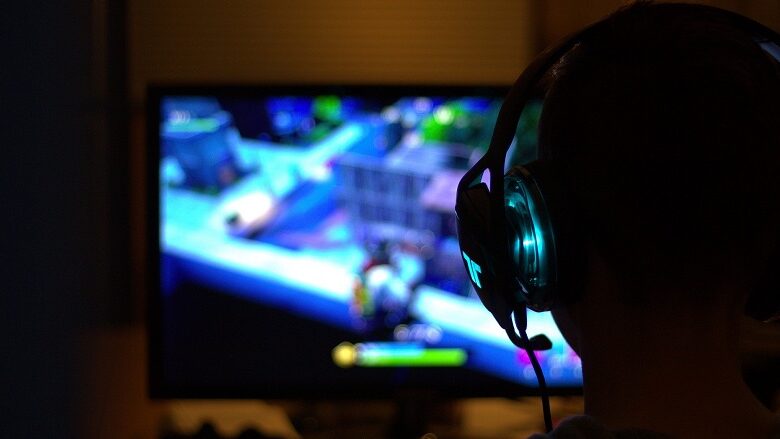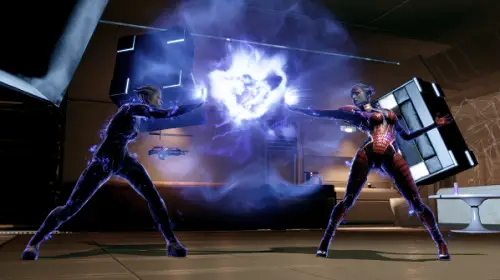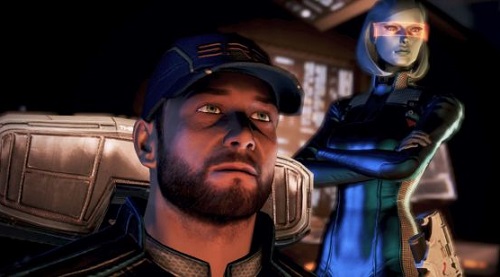
Disabled gaming: the representation of disability in Mass Effect
Gaming is a popular pastime, whether you have a disability or not. But you don’t often see disabled characters featuring in games. Here, disabled gamer and blogger Dax, who took part in our recent Twitter Takeover during the Paralympics, shares their thoughts on the representation of disability in the popular game Mass Effect from their blog Diary of a Disabled Person.
A couple of months ago, having not had the opportunity to play Mass Effect as a teenager, I downloaded the remastered edition, called Mass Effect: Legendary.
I knew almost nothing about the games beyond the fact that the choices you made in one game impacted what happened in the next one. I was also vaguely familiar with the names of a few important characters and places. But l had high expectations due to the game’s reputation.
Once I began playing, I did indeed come to understand why they are some of the most celebrated video games in history; the gameplay was solid, the storyline is excellent, and the character development and world-building are some of the best I’ve ever seen.
One thing I didn’t expect, however, was to encounter some of the most impressive representations of disability in pop culture that I can find.
Disability represented in Mass Effect
If you don’t want any spoilers for Mass Effect 1, 2, or 3, save this article for later!

In Mass Effect 2, there is a side quest called Cerberus: Project Overlord, which involves investigating a base where a science experiment of some kind has gone horribly wrong (is there any other kind of experiment?). The investigation quickly devolves into a shoot-out with the sentient robot enemies known as the Geth.
Once you’ve fought your way to the heart of the operation, you discover a scientist who, alongside his autistic brother, wants to communicate and connect with the Geth in an effort to pacify them.
Unfortunately, at this point, the representation of autism is clunky. We discover that David is the only one who can communicate with the disgruntled robots, which leads the scientists quite literally to hook him up in a brutal manner to a series of computers and machinery, essentially using him to control the Geth.
David is in severe distress and his heightened emotional state is reflected in the Geth he controls, who then turn on the scientists.
Enter Commander Shepard, the protagonist of the series, who stops the experiments and unhook a traumatised David from the machinery, resolving the issue. The resulting discussion with David’s brother is where this example of disability representation improves somewhat.
Shepherd gives the remaining scientists a verbal onslaught about disregarding someone’s humanity simply because they work differently.
She shuts the entire operation down and sends David to an elite academy where he will be allowed to develop his skills in technology.
In the following game, you can actually visit the academy during a mission where you find him happier and relatively safe (considering there’s a galactic-wide invasion going on), and later bump into his brother who is still carrying the guilt of his actions almost a year after the event.
It’s awkwardly done, but the real-world implications of not regarding disabled people as equally human to our able-bodied counterparts are apparent.

Also in Mass Effect 2 is the infamous quest Samara: The Ardat-Yakshi. Samara is a blue tentacle-y alien belonging to the race called the Asari, a sexless species that reproduces by connecting their consciousness with another individual of any sex or race, including humans.
Ardat-Yakshi are Asari people with an extremely rare genetic mutation that, when attempting to reproduce, overloads and destroys the central nervous systems of their chosen partner by… making them orgasm really hard.
Some of the Ardat-Yakshi use this ability to go on galaxywide murder rampages. As result, they are expected to reside in institutions where they are isolated from the rest of the galaxy for their entire lives, even if they had never or never intended to murder someone.
The analogy to the institutionalisation of disabled people is not a far-fetched one.
The quest begins with Samara on the tail of an escaped Ardat-Yakshi who has committed a string of gruesome murders, who they intend to kill for their crimes.
As Commander Shepard drew closer to their target, Samara goes on to reveal that all three of their children are Ardat-Yakshi, including their current target. At the climax (hehe) of the quest, you can choose to help Samara achieve their goal, or side with their child and kill Samara.
I found this choice extremely difficult to make – on the one hand the Ardat-Yakshi had attempted to kill me and showed no remorse for their crimes, fully intending to continue their murder spree.
But on the other hand, I understood their anger at being locked away in an institution because of something completely beyond their control, regardless of whether they ever harmed a soul.
Ultimately, I sided with Samara and put an end to the murder spree, but this choice was very intentionally made to be a difficult one.

The best representation of disability in the Mass Effect trilogy is probably the most easily missed. In all three games the pilot of the Normandy, your state-of-the-art spaceship, is a man nicknamed Joker.
Joker lives up to his name, often serving as the comedic relief whilst sat in the pilot’s chair, which he never seems to leave during the first game.
At the start of the second game, the Normandy is attacked and must be evacuated, and Shepard helps a limping Joker hobble to an escape pod.
I assumed that he was limping because he had suffered an injury during the attack, but in the third game, Joker can be seen walking with some difficulty at several points. As it transpires, Joker is disabled.
Joker’s disability is made much more obvious in the third game, with a couple of instances of disabled snark standing out in particular.
On the first occasion, he can be found sitting on a public bench in a shopping mall with the ship’s droid, which is unusual as droids are often not permitted in public areas due to the aforementioned Geth.
Upon speaking to him, you learn that he has declared the droid to be the equivalent of a present-day service animal, allowing her to accompany him.
The second instance occurs during dinner at a fancy restaurant where Shepard is attacked. Shepard overturns the table and ducks behind it, remaining hidden while enemies scour the quickly emptying restaurant looking for them.
One enemy gets extremely close, at which point Shepard shoves Joker out into the open causing a commotion. As Shepard uses the distraction to take out the enemy, Joker can be heard loudly complaining about the unfairness of using the disabled person as bait.
Throughout the trilogy, the disabled characters are all represented as competent, unique individuals. Their skills are celebrated and their storylines are powerful, making the player put considerable thought into the choices they make.
None of the disabled characters are portrayed as pitiful or tragic – if anything, it is the way their able-bodied counterparts treat them that is meant to draw out emotions.
The representation of disability in videos games is often clunky and could certainly be improved upon. But what blew me away was how a trilogy of games that was originally released more than a decade ago handled disability better than the entire entertainment industry does today.
By Dax
You can read more of Dax’s posts on their blog, Diary of a Disabled Person, and follow them on Twitter, Instagram and Facebook.
More on Disability Horizons…